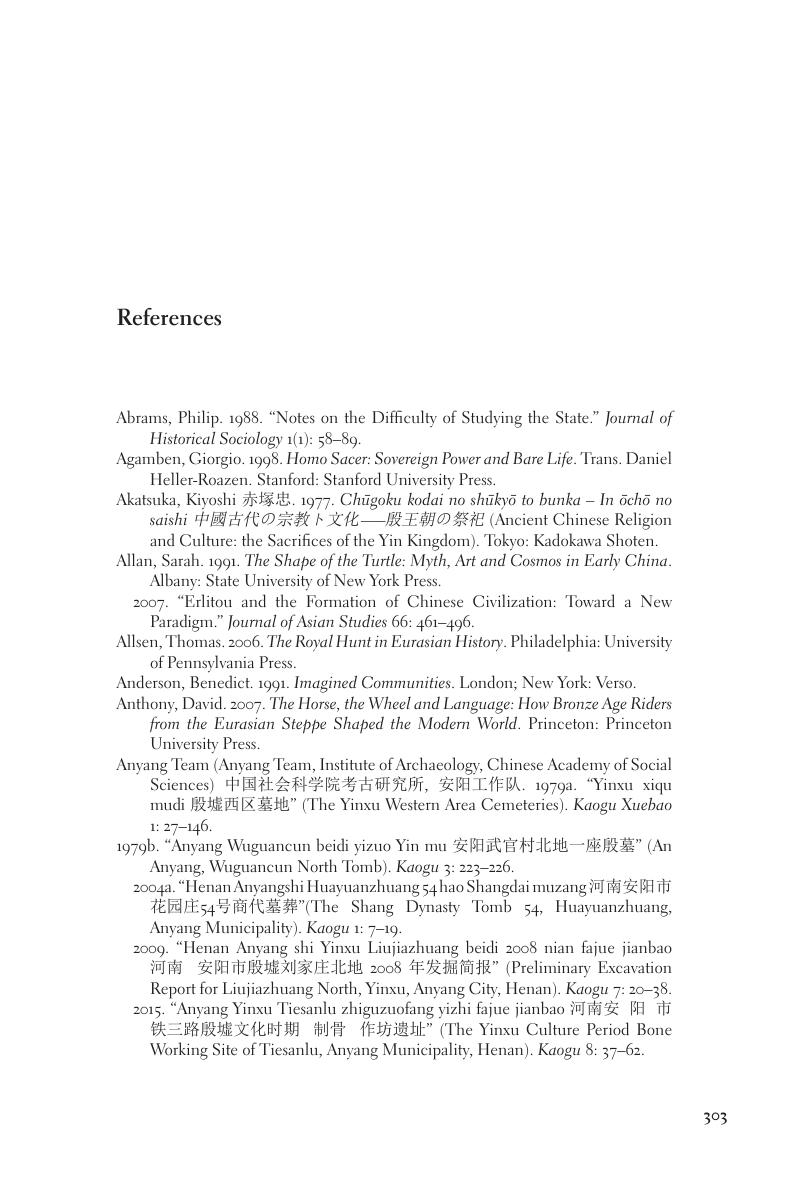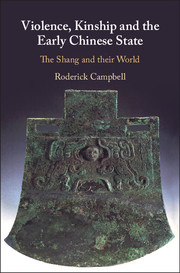Book contents
- Violence, Kinship and the Early Chinese State
- Violence, Kinship and the Early Chinese State
- Copyright page
- Dedication
- Contents
- Figures
- Maps
- Tables
- Preface
- Acknowledgments
- Chapter 1 Being, Society and World: Toward an Inter-Ontic Approach
- Chapter 2 Cities, States and Civilizations
- Chapter 3 Central Plains Civilization from Erlitou to Anyang
- Chapter 4 The Great Settlement Shang and its Polity: Networks, Boundaries and the Social Economy
- Chapter 5 Kinship, Place and Social Order
- Chapter 6 Violence and Shang Civilization
- Chapter 7 Constructing the Ancestors: The Social Economy of Burial
- Chapter 8 Technologies of Pacification and the World of the Great Settlement Shang
- Book part
- References
- Index
- References
References
Published online by Cambridge University Press: 25 May 2018
- Violence, Kinship and the Early Chinese State
- Violence, Kinship and the Early Chinese State
- Copyright page
- Dedication
- Contents
- Figures
- Maps
- Tables
- Preface
- Acknowledgments
- Chapter 1 Being, Society and World: Toward an Inter-Ontic Approach
- Chapter 2 Cities, States and Civilizations
- Chapter 3 Central Plains Civilization from Erlitou to Anyang
- Chapter 4 The Great Settlement Shang and its Polity: Networks, Boundaries and the Social Economy
- Chapter 5 Kinship, Place and Social Order
- Chapter 6 Violence and Shang Civilization
- Chapter 7 Constructing the Ancestors: The Social Economy of Burial
- Chapter 8 Technologies of Pacification and the World of the Great Settlement Shang
- Book part
- References
- Index
- References
Summary

- Type
- Chapter
- Information
- Violence, Kinship and the Early Chinese StateThe Shang and their World, pp. 303 - 324Publisher: Cambridge University PressPrint publication year: 2018

